Polylang has added in its 3.6 Pro version an option called"DeepL Machine Translation", which is nothing more than a way to connect to the DeepL API to translate posts and pages in an agile way.
Before we go on to see how it works, if you don't want to, or can't, use the paid version of Polylang, there is a free alternative.
To do the same you can use the free version of Polylang and the help of another plugin, also free, called"DeepL Pro API translation plugin" (not developed by DeepL), which you will find in the WordPress plugin repository.
In this post you have the details on how to do it.
"DeepL Machine Translation" in Polylang Pro
Once Polylang Pro 3.6 is installed, go to Languages/Settings.
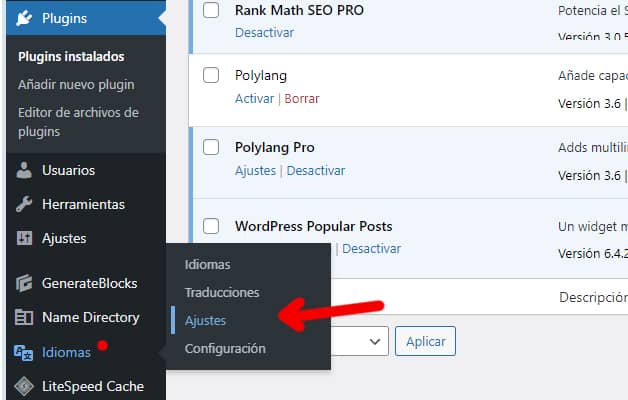
There we activate "Automatic translation".
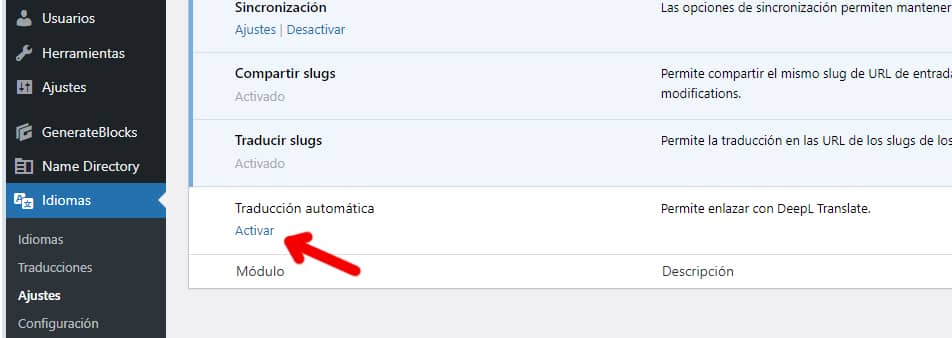
Now we can add our API key. If you don't have one, you have two options available to get one:
1- DeepL API Free - The free API key for developers allows you to translate up to 500,000 characters per month free of charge. You can upgrade to Pro at any time.
2- DeepL API Pro - The API Pro key costs 4.99 euros per month and you can top it up with 20 euros per million characters.
We enter our password and check the connection of the tool with DeepL.
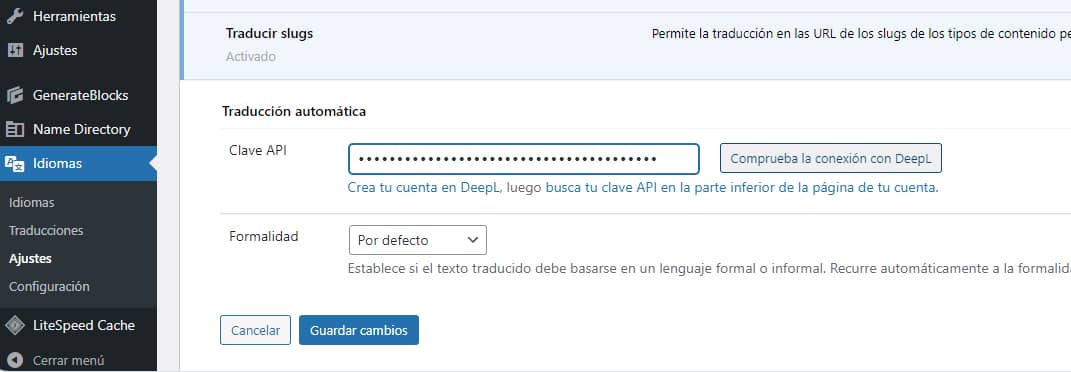
If our password is valid, this message will appear with a green background.
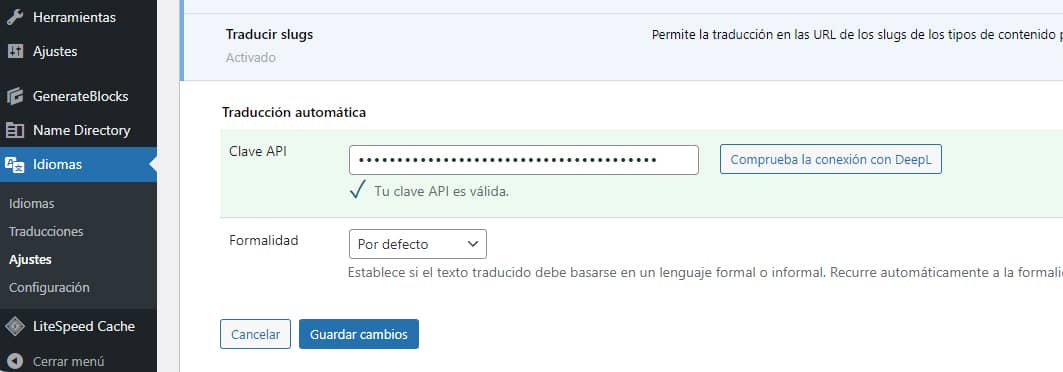
In the drop-down menu "Formality" you have three options; default, formal and informal translation. It has to be said that the informal translation of DeepL has improved a lot, but if you don't want to have to go through texts in depth, the ideal is to use the formal one or leave it as the default and then the formal one will be used when the informal one is not good enough or is not possible.
We can now exit the Polylang settings and test the translation.
We access the edition of any article we have published and the first thing to do is to leave the icon DeepL(1) marked in blue. This activates the option to translate automatically when creating the new article in each language. If you leave it deactivated, a page will be created with the same content, but without translation.
Now, by clicking on the + symbol(2), we will create the new page, which will appear already translated in the selected language.
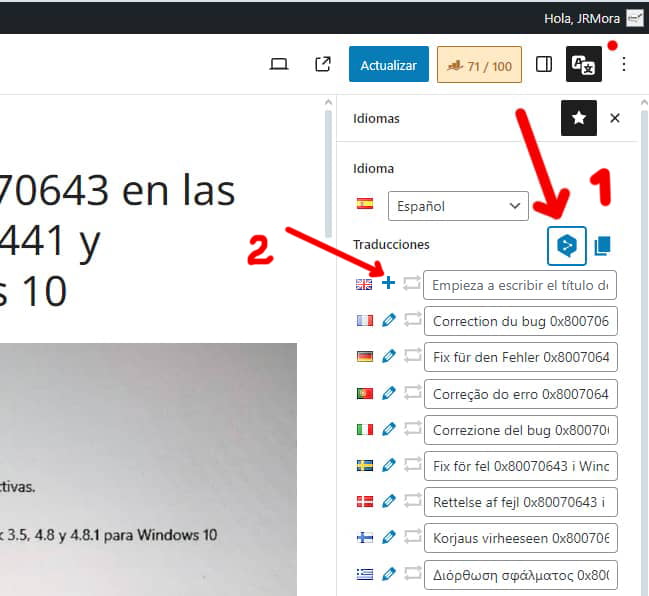
The response is very fast, much faster than the free plugin mentioned at the beginning of this post. In addition, it also translates on the fly the alternative text of the images and their title attribute (if defined) and the description of the post you have added with plugins like Rank Math and even the manual excerpt, if it exists.
By all accounts, this option has a much faster and more complete response that greatly reduces the time it takes to create new translations.
The only drawback I have encountered has been with the tags. I think that Polylang has not yet achieved a balanced management of the translation of taxonomies.
The problem that arises is that if the tags used do not exist in translation before creating the new article, the ones without translation disappear from the original article. When there are many tags, and they are used in many articles, this can be a big pain and a waste of time to retrieve them.
To solve this without risk, I have found no other option than to resort to the tedious task of first creating translations of all the tags that are being used in the original article to be translated. The same applies to the categories, but as there are always far fewer of them, it is not a hassle.
When you start translating your pages, you can check the number of characters you have used in Languages/Settings where you will find the % used and the number of characters left.
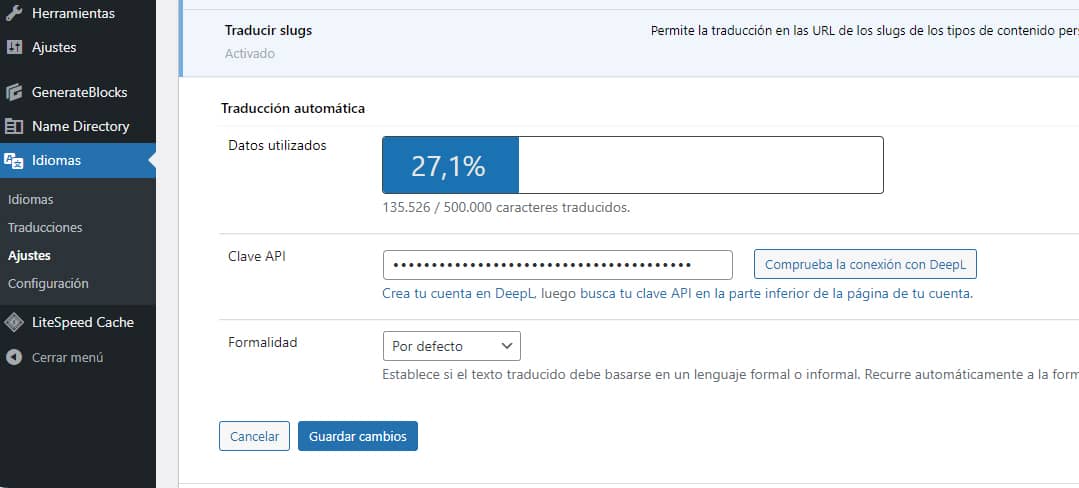
This post does not contain any paid or affiliate links, in fact, neither Polylang nor DeepL have an affiliate programme.







